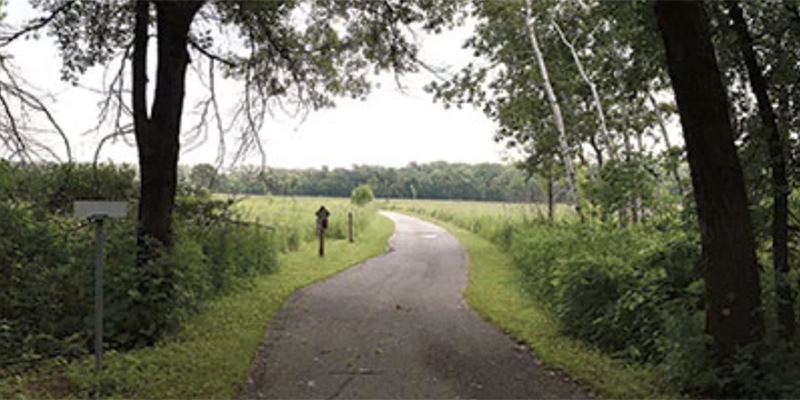Al Batt: Old Mother Hubbard’s squash
Published 5:34 pm Tuesday, October 26, 2021
|
Getting your Trinity Audio player ready...
|
Echoes from the Loafers’ Club Meeting
I watched people jogging by my house yesterday. It gave me the energy to finally do it.
To take up jogging?
No, to get up from the sofa and close the blinds.
Driving by Bruce’s drive
I have a wonderful neighbor, named Bruce. Whenever I pass his drive, thoughts occur to me. I sat waiting as I was supposed to do. “It shouldn’t be long. Take a seat,” I was prompted.
People were entering. A man held the door open for two women. The two were busy visiting and didn’t acknowledge his kindness. We’re all guilty of that omission. “YOU’RE WELCOME,” he said in caps.
They didn’t acknowledge his loud comment. It was his world. It’s good when someone responds to kindness, but don’t cancel the courtesy with a harsh remark if they don’t.
Hubbard spice
When every garbage can is pumpkin-spiced, I think of little things. If something bites me and there is nothing there, it’s either because my wife is sticking pins in that voodoo doll image of me again or I’ve been bitten by a no-see-um (many insects share the nickname). These minuscule insects are minute pirate bugs and they bite out of their weight class. If no-see-ums were the size of mosquitoes, I’d be a goner.
And I think of big things like the zombie squash. Large, warty and blue-gray, the Hubbard squash is scarier than zombies. They are the size of the peanuts Paul Bunyan enjoyed and for years, were made into Yugo automobiles. The squash was brought to Marblehead, Massachusetts, in the hold of a ship from the West Indies, by Knott Martin. I’ve never known anyone with that first name, but I know many not Knotts. I knew a guy named Knothead once, but I don’t believe it was his given name. The seeds fell into the grateful hands of James Gregory who introduced them to the American market in 1854. He wrote a book in 1867, titled, “Squashes: How to Grow Them.” It was a page-turner. Gregory prospered and donated a library to the town of Marblehead and established the Gregory Fund, which provided a carriage to every local family who gave birth to twins. Why is it called Hubbard squash? Did Old Mother Hubbard go to the cupboard to get her poor dog a bone and discover the cupboard was crammed with squash? One story says Elizabeth Hubbard, Gregory’s washerwoman or neighbor or both, was given the seeds by Martin and shared them with Gregory. Other accounts say Hubbard grew the squash from seeds or Knott’s sister Sarah grew the squash. Sarah was hesitant about approaching Gregory with the seeds and asked Hubbard to do it. Hubbard claimed it was the best squash she’d ever tasted and Gregory named it after her. The Hubbard (we’re friends, so I call it by its first name) has thick skin, the shelf life of a zombie (6 months if hardened off and stored properly), and can weigh 40 pounds. It has a nutty-sweet taste. We grew it and yields were higher than imagined. Its thick exterior was challenging. I body slammed it, hacked it with a meat cleaver, attacked it with a Renaissance fair battle-ax and nicked the squash with a chainsaw. Mother baked and roasted it, substituting it in any recipe calling for pumpkin, butternut squash or sweet potato. She made soup and bread from it. Just when I’d learned to dislike the never-ending vegetable and wished upon a star for a Hubbard squash failure, Mom baked a pie—Hubbard squash pie. It was delicious.
Nature notes
The starlings moved in like Cousin Eddie’s family in the National Lampoon’s Vacation film series. They were numerous, loud and argumentative creatures with prodigious appetites. Even the house sparrows scattered at the invasion. The house sparrow isn’t a true sparrow. It’s a weaver finch native to Eurasia and northern Africa that succeeded in urban and farming areas worldwide—including North America, where birds shipped from England were released in New York in 1851. The bird known then as the English sparrow was brought here to combat cankerworms and people built nest boxes for them. By 1900 the sparrows had spread to the Rocky Mountains. By 1910, they were established in California. They’re found on every continent except Antarctica.
My father once shared a hospital room with a Sparrow. Not a house sparrow. It was a man named Sparrow. A Batt and a Sparrow were roommates. My father was uncomplaining, but Sparrow chirped a lot. Just as house sparrows do.
Meeting adjourned
Every day is a bonus and a reason to be kind.





